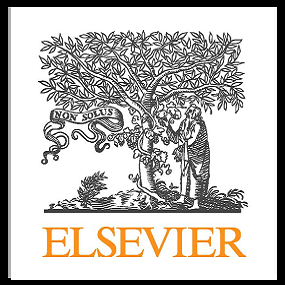دانلود رایگان مقاله ارزیابی اثرات همکاری و رقابت در کارهای هوانوردی و کسب دانش فضایی در محیط های واقعیت مجازی – سال 2019


مشخصات مقاله:
عنوان فارسی مقاله:
ارزیابی اثرات همکاری و رقابت در کارهای هوانوردی و کسب دانش فضایی در محیط های واقعیت مجازی
عنوان انگلیسی مقاله:
Evaluating the effects of collaboration and competition in navigation tasks and spatial knowledge acquisition within virtual reality environments
کلمات کلیدی مقاله:
واقعیت مجازی، صفحه نمایش نصب شده در بالای سر، همکاری، رقابت، هوانوردی درونی، حافظه تصویری-فضایی، مطالعه کاربر
مناسب برای رشته های دانشگاهی زیر:
مهندسی کامپیوتر – مهندسی هوافضا – مهندسی فناوری اطلاعات
مناسب برای گرایش های دانشگاهی زیر:
هوش مصنوعی – هوانوردی
وضعیت مقاله انگلیسی و ترجمه:
مقاله انگلیسی را میتوانید به صورت رایگان با فرمت PDF با کلیک بر روی دکمه آبی، دانلود نمایید. برای ثبت سفارش ترجمه نیز روی دکلمه قرمز رنگ کلیک نمایید. سفارش ترجمه نیازمند زمان بوده و ترجمه این مقاله آماده نمیباشد و پس از اتمام ترجمه، فایل ورد تایپ شده قابل دانلود خواهد بود.
فهرست مطالب:
Outline
Highlights
Abstract
Keywords
۱٫ Introduction
۲٫ Background and related work
۳٫ Experimental design
۴٫ Results
۵٫ Discussion and conclusions
Acknowledgments
References
قسمتی از مقاله انگلیسی:
Abstract
Current virtual reality environments, due to their higher viewing resolution and degree of immersion, can help users to acquire spatial knowledge with more ease. In addition, they are considered suitable environments that can facilitate collaborative engagement. With recent advances, we have a new wave of virtual reality technologies in the form of portable head-mounted displays (HMD), like the HTC Vive and Oculus RIFT. In this research, we investigate the effects of collaboration and competition activities, that are carried out within HMD VR environments, on users’ navigation behavior and acquisition of spatial knowledge. To do this investigation, we have developed a 3D virtual shopping mall with 3 floors and a number of shops. This mall resembles one that people would normally visit in real life. We then have conducted an experiment with two groups of paired users and one group of single users. Their task is twofold: (1) to navigate within the virtual mall and collect a set of items placed throughout the mall; and (2) to remember the locations of the items and several designated shops. While they have to do this in the shortest time possible, one group of paired users have to work in collaboration with each other, and the other group in competition. Paired users in both groups are physically co-located and are allowed to talk to each other. The third group of users have to work alone. After the experiment, each user is requested to pinpoint the location of the items and shops on a map with the layout of the virtual mall. The results show different patterns of user behavior for the two paired groups and single users. In addition, they indicate gender differences in behavior and performance. Overall, the results help us understand the effects of competition and cooperation in navigation behavior and spatial memory recall using commercial HMD VR systems.
1. Introduction
Navigation is the ability to find one’s way around our environment and is one of the most common activities people do in both physical and virtual reality environments [1–4]. Typical environments include in-door buildings such as shopping malls or public museums. People navigate around these environments to locate places of interest for later recall—for example, location of specific shops within the malls [5]. It is not uncommon that while navigating people simultaneously perform other tasks (e.g., talking on the phone or with other people who are accompanying them).




